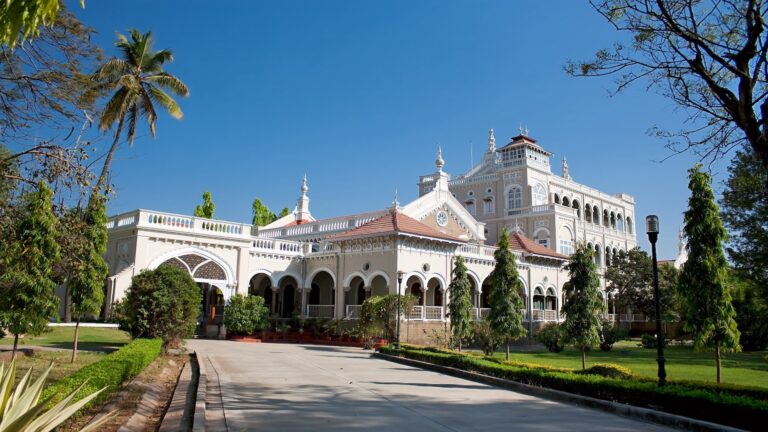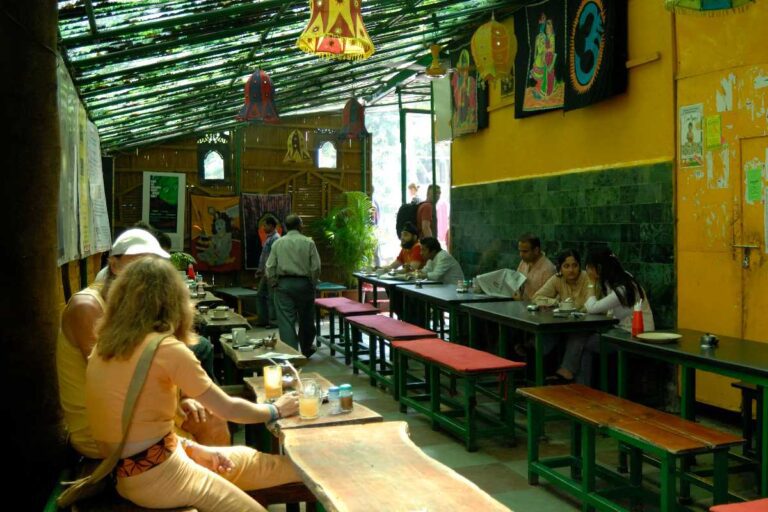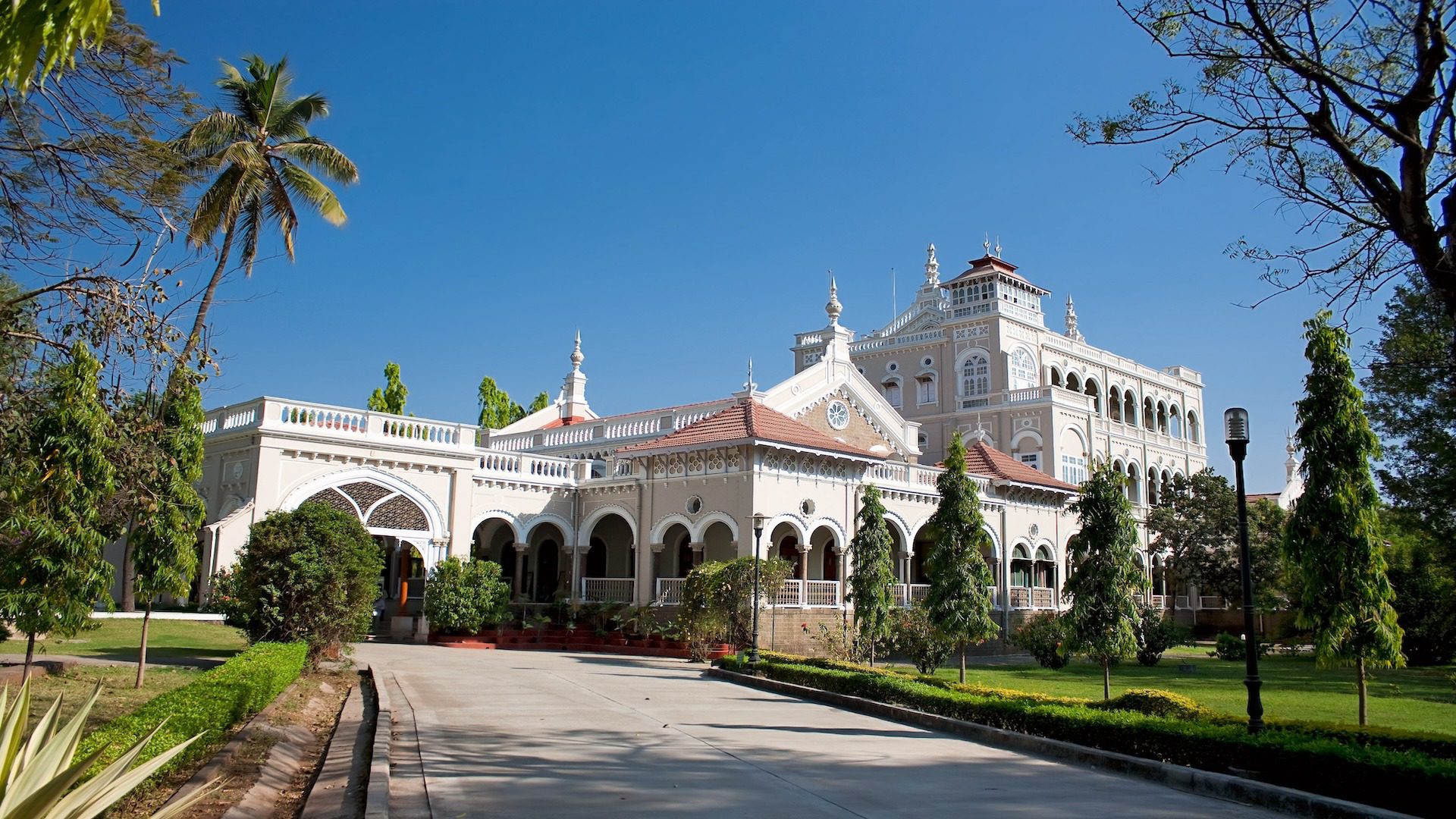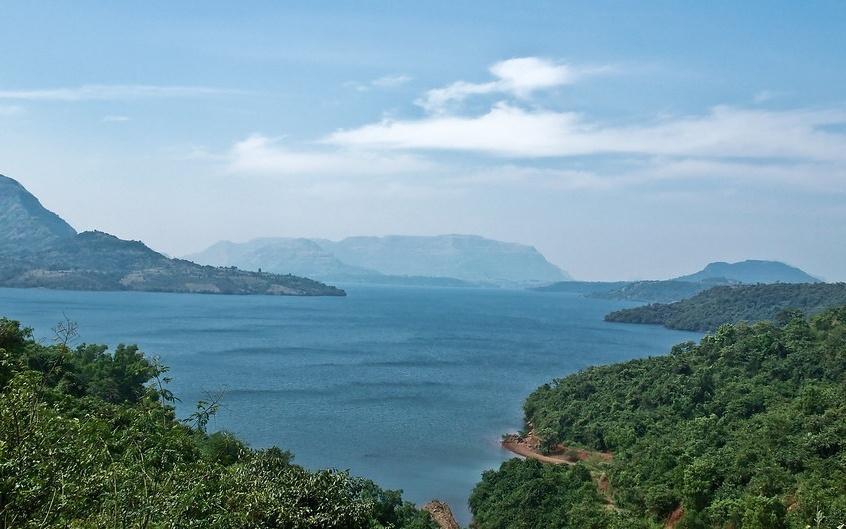Everyone at some point in time loves to get acquainted with our Indian history, right? However, acquiring knowledge from the right person is crucial; otherwise, having half-knowledge or incorrect knowledge is equivalent to having no knowledge. But we at Shopisthan, after all the doctrinal and non-doctrinal research, are here to make you acquainted with every detail of Ajanta Ellora Caves, Ajanta Ellora history, Ajanta and Ellora paintings, and much more.
So, are you ready to embark on a mesmerizing journey through ancient Indian art and architecture? Ajanta and Ellora Caves, located in the state of Maharashtra, India, are not just caves, but a testament to the rich heritage sited beckons travelers from across the globe, offering a glimpse into a world of intricate carving, vibrant painting, and profound spirituality.
This comprehensive guide will provide you with everything you need to plan a visit to these places, including minute details of them.
Dive into the Ajanta Ellora History
Ajanta Caves

The Ajanta Caves, located in Maharashtra, India, are a group of 30 rock-cut Buddhist cave monuments dating from the 2nd century BCE to about 480 or 650 CE. These caves. Comprising chaityas (prayer halls) and viharas (monasteries), they were carved during two distinct phases. The first phase began around the 2nd century BCE, and the second occurred from 400 to 650 CE, or possibly within a shorter period of 460 – 480 CE. The caves are renowned for their stunning murals and sculptures, which depict the life of Buddha and the Jataka tales, reflecting the influence of both Theravada and Mahayana Buddhist traditions. Rediscovered in 1819 by a British officer, the Ajanta Caves are considered masterpieces of Buddhist religious art and a UNESCO World Heritage Site.
Ellora Caves
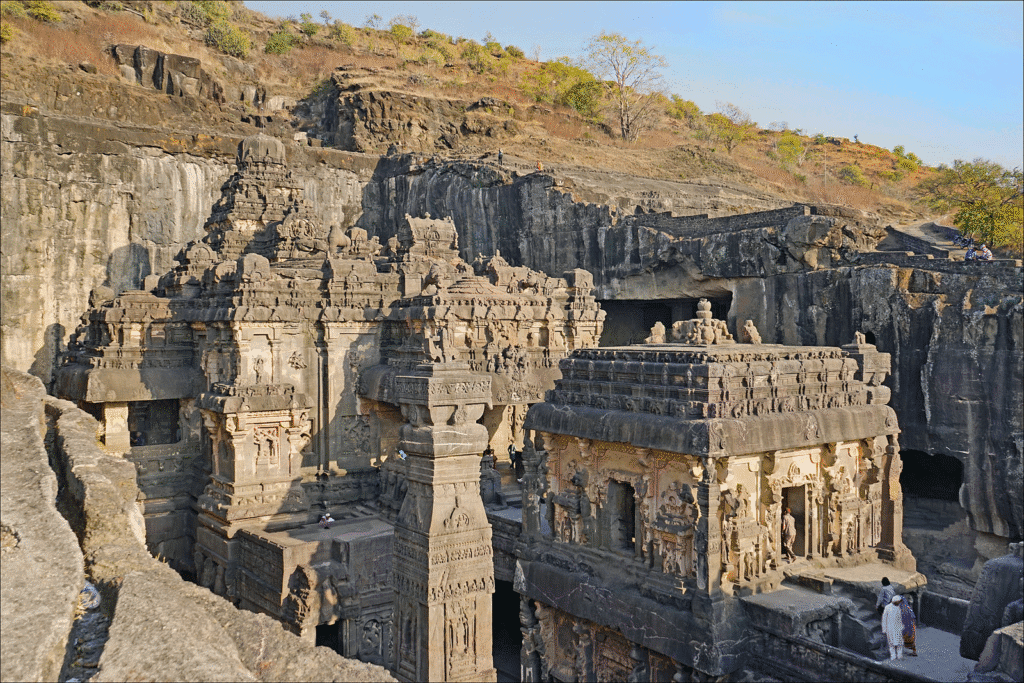
The Ellora Caves, a UNESCO World Heritage Site in Maharashtra, India, represent a remarkable example of religious harmony and rock-cut architecture, dating from the 6th to the unique confluence of Buddhism, Hinduism, and Jainism, and highlighting the religious tolerance of ancient India. The earliest caves were likely built during the Kalachuri dynasty, with subsequent contributions from the Chalukya and Rashtrakuta dynasties. The most famous of these is the Kailasa Temple, an awe-inspiring monolithic structure dedicated to Lord Shiva, excavated under the patronage of Krishna. The most significant and important part is that it has the 12th Jyotirling situated in Ellora Caves, which stands as a testament to the artistic, technological, and spiritual achievements of ancient India.
Best time to visit Ajanta Caves and Ellora Caves
Ajanta Caves and Ellora Caves
As you have to be in the sun and will be exposed to it all day, a pleasant time to visit the Ajanta Caves and Ellora Caves would be:
October to March: These months are the best to visit as it has pleasant weather with temperatures ranging from 10°C to 25°C, making it perfect for exploration, and also these months are considered the peak tourist season.
Timing: 9:00 AM to 5:00 PM, daily except Mondays.
Note: Whenever you plan to go to Ellora Caves, make sure you have ample time, as there are many other places to visit, and our very own 12th Jyotirling, which surely makes your travel memorable and spiritual.
ALSO READ: Best Things to do in Jaipur in 48 hours
Best Route to Reach There
The major connective area or place is Chh. Sambhajinagar (earlier Aurangabad), Maharashtra, from where you can visit both the places, Ajanta Caves and Ellora Caves. It’s located approximately 100 km away from each other. Therefore, Aurangabad serves as the most convenient base for visiting both sides.
Modes of reaching there
By Air: Chh. Sambhajinagar (earlier Aurangabad) Airport is the nearest airport, with regular flights from major Indian cities like Mumbai, Delhi, and Jaipur. From the airport, you can hire a taxi or take a local bus to reach the caves.
By Train: Chh. Sambhajinagar (earlier Aurangabad) Railway Station would be the nearest and connecting railway station for both spots. From the railway station, you can hire taxis or use buses to reach the cave complexes.
By Road: This can be a bit long journey for you, but if you want a proper journey experience with the perks of visiting some extra places, then a road trip to your destination would be the best choice. Ajanta Caves and Ellora Caves are well-connected by road. You can hire a taxi or take a bus from Chh. Sambhajinagar (earlier Aurangabad). The road journey from Chh. Sambhajinagar (earlier Aurangabad) to the caves is scenic, offering a glimpse of rural life in Maharashtra.
Indulge yourself in experiencing the Paintings and Art of Ajanta Caves and Ellora Caves

The art within Ajanta and Ellora is breathtaking and provides insights into the beliefs and artistic skills of ancient India.
- Ajanta Caves Paintings: The Ajanta Caves are renowned for their stunning murals, created using natural materials and a tempera technique. These paintings primarily depict scenes from the Jataka tales, showing expressive faces, elegant poses, and detailed ornamentations.
- Ellora Caves Architecture and Sculptures: Ellora is celebrated for its rock-cut architecture and sculpture representing Buddhism, Hinduism, and Jainism. The Kailasa Temple (Cave 16) is an architectural marvel, carved from a single rock. Other significant caves include Cave 10 (Vishvakarma Cave) and the Jain Caves (Caves 30-34).
ALSO READ: Top 10 Beaches in India you must visit
Essential Tips for your Ajanta-Ellora Caves Tour
To make your trip to Ajanta and Ellora Caves smooth and memorable, keep these tips in mind.
- Wear Comfortable Shoes: A lot of walking is involved, so wear comfortable shoes to navigate the caves effortlessly.
- Stay Hydrated and Carry Snacks: Carry water and snacks, as options inside the caves are limited.
- Respect the Sacred Sites: Remember that these caves are religious monuments, so be respectful during your visit.
- Hire a Guide: Opt for a government-licensed guide to get a complete overview and hear interesting stories about the caves. The guide’s fee is approximately INR 1,800 for a group of up to five people.
- Carry a Torch: Many caves are dark, so a torch can be helpful.
- Check for Closure Days: Ajanta Caves are closed on Mondays, and Ellora Caves are closed on Tuesdays.
- Photography: Photography without flash is permitted at both sites. Videography is not allowed inside Ajanta Caves, but there’s no such restriction at Ellora.
- Book Tickets in Advance: Purchase entry tickets online through the ASI website or incredibleindia.org to avoid queues. The entry fee is INR 40 for Indians and INR 600 for foreigners per site.
- Plan for Travel Time: Keep in mind the distance between Ajanta and Ellora
- Dress Appropriately: Wear modest clothing as these are religious sites.
- Be mindful of Crowds: Visit early in the morning or on weekdays to avoid large crowds.
- Explore the Surroundings: Take time to relish the serene surroundings and the natural beauty of the area.
Embrace the Timeless Beauty
A tour of the Ajanta and Ellora Caves is more than just a trip; it’s an immersive experience that connects you with India’s rich past, artistic heritage, and spiritual ethos. By planning your visit with these insights and tips, you’re sure to create memories that will last a lifetime. So, pack your bags, book your tickets, and get ready to explore the timeless beauty of Ajanta and Ellora.


